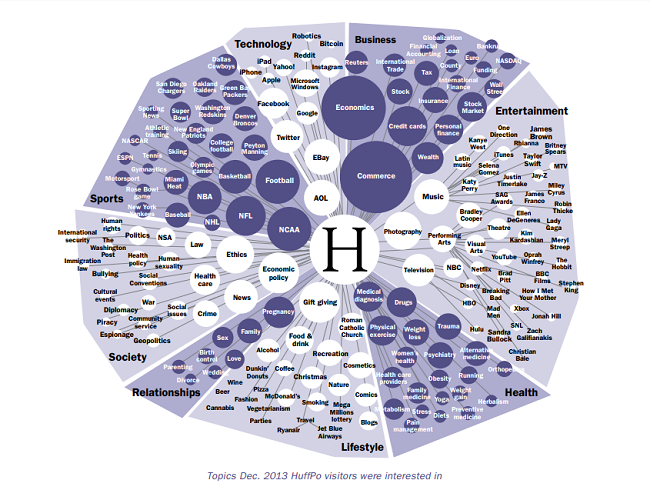Should all data have to be big?
When everyone is competing for the same thing, how do you make your brand stand out? How do you meet consumer expectations and at the same time commit ROI to your bosses? The answer is in data.
Data-Driven Marketing: The Answer to your Bosses’ Demands discusses how brands can produce consumer-focused campaigns, products, and solutions through market data. The article centers on producing actionable insights using data – small and big.
In this article, we will tackle the difference between small and big data. Understand the importance of each and find out if size really matters.
What is Small Data?
Small data is commonly defined as usable chunks of information that can be seamlessly gathered through excel, analyzed real time, and impact present decisions. Small data is comprehensible, obtainable, and actionable. This can be extracted from owned social media analytics, brand’s promotions, and conducted researches.
Below is a success case of small data which interestingly, was against its initial big data findings.
The Lego Story

Source: Brickset
Every big data set analyzed by Lego concluded one thing: future generations will lose interest in the brand. These data had shown how digital natives- people born after the 1980s, are more inclined to computer games and instant gratification. This posed a serious threat to the building-blocks company since obviously, the instant reward scheme isn’t their strength.
Not losing faith, Lego marketers conducted an on-ground research and visited some of its clients’ homes. They wanted to understand what makes Lego stand out and see what they can do to save the brand. To their surprise, their ethnographic visits proved their big data insights – the demand for instant results – were false.
The biggest turnaround in Lego happened when they met an 11-year old with a worn out pair of Adidas sneakers. The kid held the pair of shoes like a gold medal and passionately explained to everyone how it was his favorite pair of kicks. The beat-up and ragged look tell a story: he is one of the best skateboarders in the city. He was proud of it.
Lego marketers realized that children get a sense of belongingness and pride from participating and achieving a high level of mastery at their chosen skills or fields. They choose something they can display and call their own work, no matter how tedious it may get. Banking on these data, Lego remodeled their strategy and eventually, sold off their labor-intensive products. They have also continued alliances with Harry Potter and Star Wars. Fast forward to ten years, the brand’s sales rose to 11% and for the first time ever, it exceeded Mattel as the world’s largest toymaker.
Take away: It’s important to derive insights from your big data but it should only serve as a guide. Look within your brand and analyze beyond numbers. As what Andrew Lang once said, “…use statistics as a drunken man uses lamp posts—for support rather than for illumination.”
What is Big Data?
Big Data is a digital marketing buzzword that can sometimes be overwhelming. Here’s a snippet.
- 2.5 quintillion bytes of data are produced by the internet daily.
- 40 zettabytes of data are projected to be produced by 2020.
- 10% of big data is structured while 90% is unstructured.
- Less than 1% of the world’s data is analyzed while over 80% is unprotected.
As defined by SAS, “Big data refers to the ever-increasing volume, velocity, variety, and veracity of information. It also refers to the difficulties and competencies related to storing and analyzing such enormous data sets.”
With these exceedingly huge volumes of data available, you would think marketers have all the information needed to understand and predict their consumers. Opportunities are limitless with all these data. Right? Not always. Unless these data are translated into actionable insights, they are just as futile as no data.
Big data can only be profitable when turned into actionable insights. Avoid falling into the analysis-paralysis trap, check out Making your Data Analytics Work For You.
To give you a clearer idea on how Big Data can help you, below is a success case of a website we are probably all familiar with.
The Huffington Post Case

Being one of the websites with the highest traffic and known to be a rapidly growing news and entertainment websites in the world, it is no surprise that The Huffington Post (THP) knows how to make sense of data. They keep it a habit to analyze trends and patterns derived from their big data. Through this, THP was able to regularly optimize their website, such as but not limited to, improving content and validating user comments.
In terms of improving content, THP studies the patterns of their target readers’ browsing behavior, reading time, device used, and topics preferred. Analyzing the data provided THP the optimal posting time and favored topics of their target audience. In fact, the blog post entitled “10 Ways Living with a Toddler is Like Being in Prison” was hyper-targeted to THP’s parent readers and impressively garnered 24,000 views in 7 hours. It was also highly referred in social media attributing to 41% of its views.
Undeniably engaging, THP posts attract as much as 300 million comments in 2013. Although a lot, comments were a mix of positive, negative, and unfortunately, plenty of idiotic reactions. The website wanted to do a clean-up and improve quality of comments. Big data insights had shown that quality-comments were from the article’s targeted readers and from those who didn’t appear anonymous. Taking it from there, THP decided to eradicate lull, distracting, and absurd comments. “We are getting rid of the bashers, and now have higher quality of people commenting, even though we took some heat in the press for [ending anonymous comments],” Jimmy Maymann, THP CEO said.
Take away: Companies must consistently aim to improve their brands. Never miss to look at your data, take as much reasonable time to analyze and translate it to actionable insights, and evaluate the results. Improvements don’t necessarily have to be massive. Take a step back and ask yourself, “how can I make it better for my consumers?”
So does size matter? Not really. It depends on your goal. After all, it’s all about how you use your data.
Sources:
Miglani, S. (2016, October 14). Big Data and Small Data: What’s the Difference Retrieved from https://www.theguardian.com/news/datablog/2012/dec/19/big-data-study-digital-universe-global-volume
Murdoch, J. (2012, December 19). Study: Less than 1% of the world’s data is analysed, over 80% is unprotected. Retrieved from http://www.dataversity.net/big-data-small-data/
Big Data, Bigger Marketing. Retrieved from https://www.sas.com/en_ph/insights/big-data/big-data-marketing.html
Lindstrom,M. (2016, March 11). Lego Engineered a remarkable turnaround of its business. How’d that happen? Retrieved from https://www.techinasia.com/talk/lego-turnaround-business
Stone, Martha. (2014 November). Big Data for Media. Retrieved from http://reutersinstitute.politics.ox.ac.uk/sites/default/files/2017-04/Big%20Data%20For%20Media_0.pdf




